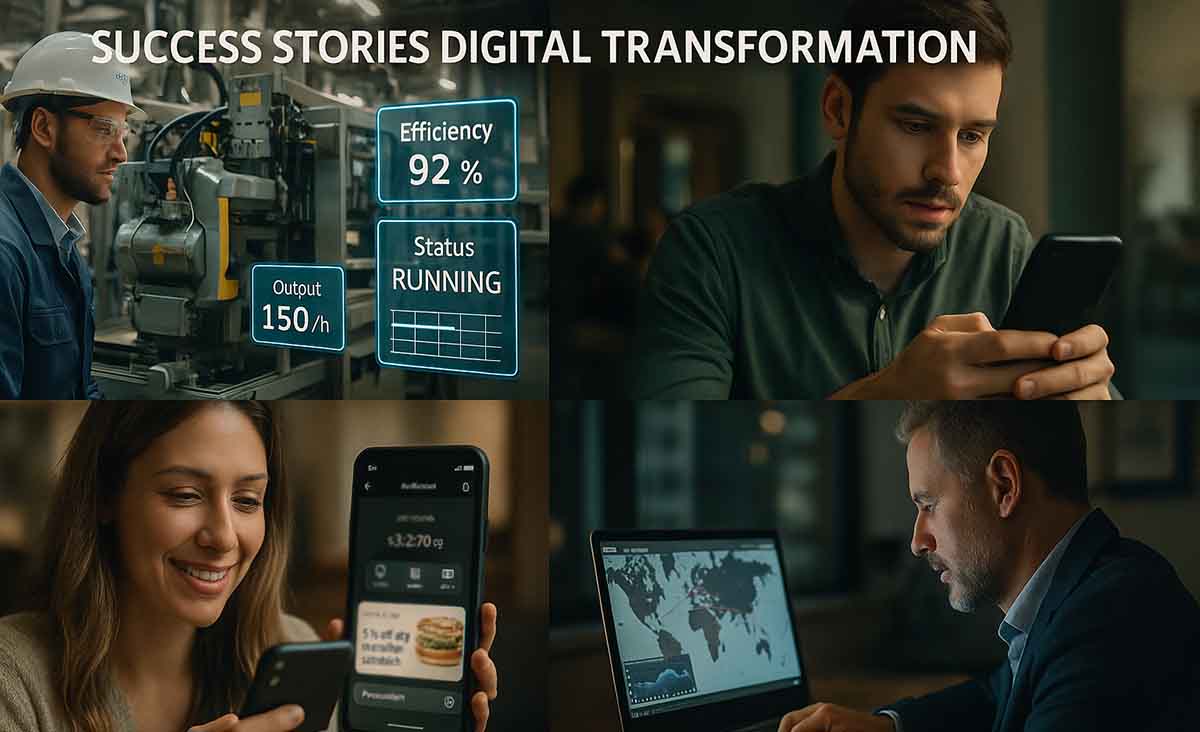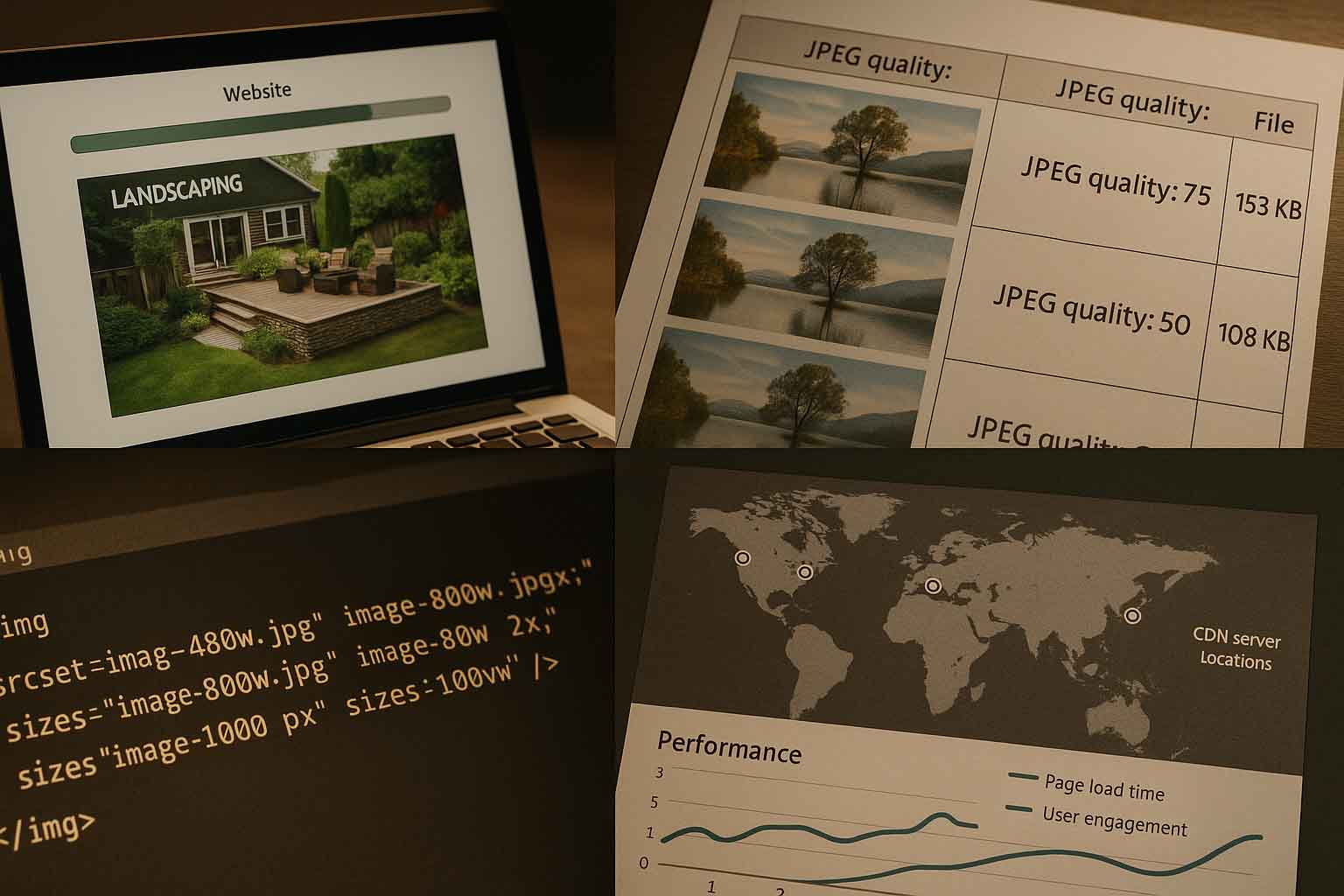
Success Stories in Digital Transformation
The fast-paced evolution of technology continues to reshape how people live and how organizations operate. For today’s business leaders, learning from real cases of digital transformation provides a reliable foundation for future planning. Instead of relying on abstract advice, seeing how top companies adapted gives concrete guidance. These examples prove that with the right strategy, people, and tools, any organization can improve results and stay competitive.
- Details how Siemens, DBS Bank, Starbucks, and Maersk used digital tools to improve performance.
- Reveals key shifts from automation to AI that made global operations more efficient.
- Underscores the impact of leadership, clear goals, and team readiness in any tech rollout.
The Urgency Behind Digital Transformation
Customer expectations have changed. Speed, personalization, and access are now baseline standards. Paper processes, manual approvals, or outdated systems can no longer keep up. Businesses that wait too long to adapt often lose ground to those that embrace change early.
Well-planned digital upgrades lead to faster delivery, fewer errors, and better decisions. Companies that invest in automation, data analytics, and cloud systems often report higher satisfaction levels among clients and staff alike.
Beyond Tools: It’s About People
One of the biggest myths about transformation is that buying software solves everything. It doesn’t. Success depends more on how people use the technology than on the tools themselves.
Employees need to understand not just the mechanics, but also the purpose behind the changes. Training becomes essential. Without it, even the best platforms fail to deliver the expected outcomes. Companies that prioritize upskilling create stronger teams who adapt faster and stay engaged.
Case Study 1: Siemens — Precision at Scale
Siemens, a global powerhouse in engineering, used digitalization to enhance manufacturing. At its Amberg facility in Germany, nearly all production steps are now digitized. Sensors track machine output, while cloud-based systems handle analysis.
This setup cut defects to under one per million units. Before automation, this level of accuracy was nearly unreachable. In addition, the factory can adjust to demand changes with little downtime. Product delivery cycles shortened by 30%.
Crucial to this achievement was team preparation. Workers received hands-on training to interpret dashboards, troubleshoot in real time, and fine-tune machines without calling external support.
Case Study 2: DBS Bank — Building a Digital Core
DBS Bank, headquartered in Singapore, decided early to transform not just its tools, but its entire model. Rather than layering apps onto legacy systems, it restructured its digital foundation.
The bank introduced agile methods, modular services, and automated testing. This overhaul sped up internal processes. Loan approvals that used to take weeks now close in hours. The Net Promoter Score, a key measure of client happiness, jumped by over 20 points.
The results didn’t stop there. In Indonesia and India, mobile-first strategies allowed more people to access financial services. Revenue from mobile-only users surged by more than 30%. That growth was built on one decision treating digital not as an add-on, but as the core of the bank’s future.
Case Study 3: Starbucks — Personalized Service Through Data
Starbucks created a unique blend of technology and customer care. Their mobile loyalty app is more than a payment method. It learns patterns: when customers order, what they choose, and how often they visit.
With this data, the app suggests add-ons, promotions, or seasonal drinks before the user checks out. This improved purchase size and frequency. It also boosted revenue by $150 million in just one year.
The company’s supply chain also became more efficient. By analyzing sales data and shipment timelines, they reduced stockouts at over 9,000 stores. Even during peak hours, customers received quick, consistent service for a smarter inventory planning powered by machine learning.
Case Study 4: Maersk — Smarter Global Shipping
Maersk, one of the world’s largest shipping firms, faced delays during the pandemic. Ports were congested, and clients wanted faster updates on cargo status. To respond, Maersk launched a predictive data platform.
Sensors placed on containers and cranes collected information in real time. Machine learning models analyzed patterns and forecasted delays. This allowed teams to reroute shipments and prevent bottlenecks.
Container dwell time dropped by 40% in busy locations like Rotterdam. Customers appreciated real-time tracking and timely updates. As a result, Maersk improved client retention while reducing costly delays.
Other Brands Making Big Leaps
While the four giants above stand out, many smaller firms are also showing how flexible thinking and smart tools bring results. For example:
– A family-run logistics company in Finland reduced fuel costs by 18% after adding route optimization software.
– A mid-sized fashion retailer in Spain increased online sales by 40% after switching to an AI-assisted inventory system.
– A legal firm in Canada shortened case review times using natural language search tools that sift through documents in seconds.
These stories prove that company size doesn’t matter as much as the willingness to rethink and improve.
Four Principles for Any Digital Shift
- Clear Goals: Transformation must be tied to a result. Whether it’s faster service or better accuracy, goals shape the path forward.
- Team Ownership: Leaders should explain the “why” and listen to the team’s concerns. Open feedback improves adoption.
- Real-Time Data: Decisions based on current information help teams respond faster to market or customer shifts.
- Steady Growth: Small improvements add up. Weekly check-ins or monthly tool reviews create a rhythm of progress.
The Role of Culture and Leadership
It’s easy to focus only on tools. But mindset often determines whether a project succeeds or stalls. Strong leadership sets the tone. When executives show interest, take part in training, or highlight team wins, people feel more motivated.
Culture matters. Teams that value curiosity, problem-solving, and continuous feedback adapt faster. They also make smarter decisions without waiting for top-down instructions. Empowered staff make the most of any platform given to them.
Common Mistakes to Avoid
Some firms rush into new tools without planning. This leads to:
– Overlapping systems
– Unused licenses
– Frustrated users who return to manual work
Others skip training, assuming everyone will adjust naturally. But even the most intuitive tools need context and practice. Without support, adoption drops and returns on investment disappear.
Avoiding these pitfalls starts with honest internal reviews. What’s really slowing the team down? Which steps take too long? Answers to these questions help identify where technology can help the most.
Measuring Long-Term Success
Good results go beyond charts or KPIs. Look at outcomes that affect people’s daily work:
– Are tasks completed faster and with fewer errors?
– Is there better communication between teams and departments?
– Do clients receive updates sooner and with more clarity?
– Has employee satisfaction improved in surveys or check-ins?
If the answer is yes, then the tools are working not just in theory, but in daily practice.
These real-world examples show that transformation isn’t just for tech giants. Any team, regardless of size or sector, can benefit from digital upgrades if the goals are clear, the tools fit, and the team is ready.
By keeping the focus on people, progress, and purpose, organizations create systems that do more than just a function supports creativity, trust, and long-term growth. The journey isn’t always smooth, but the results speak for themselves.


No Comments